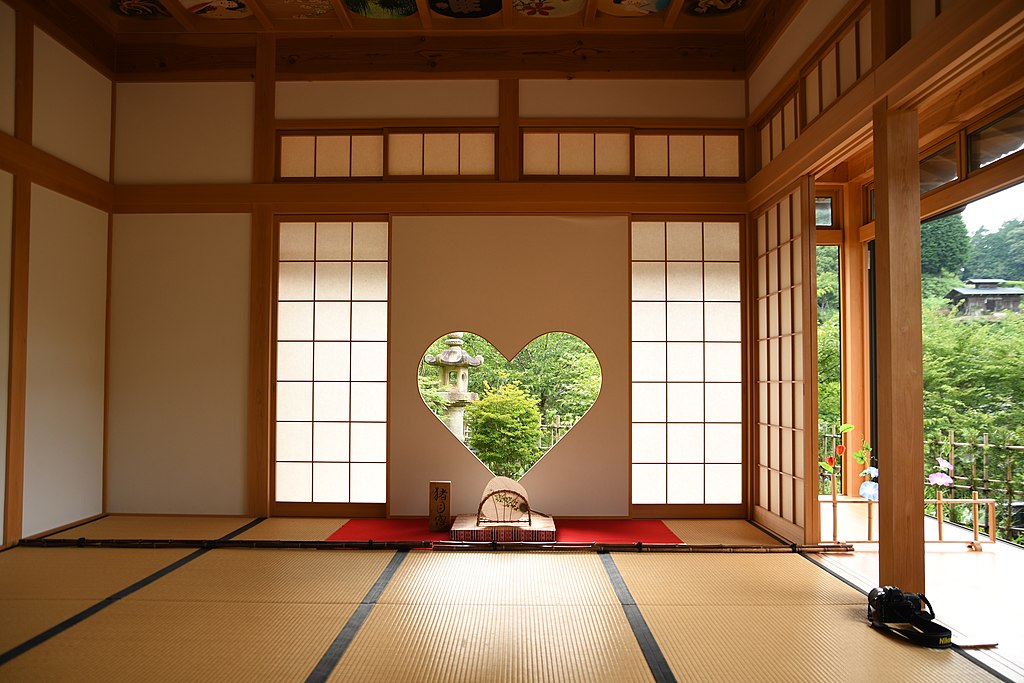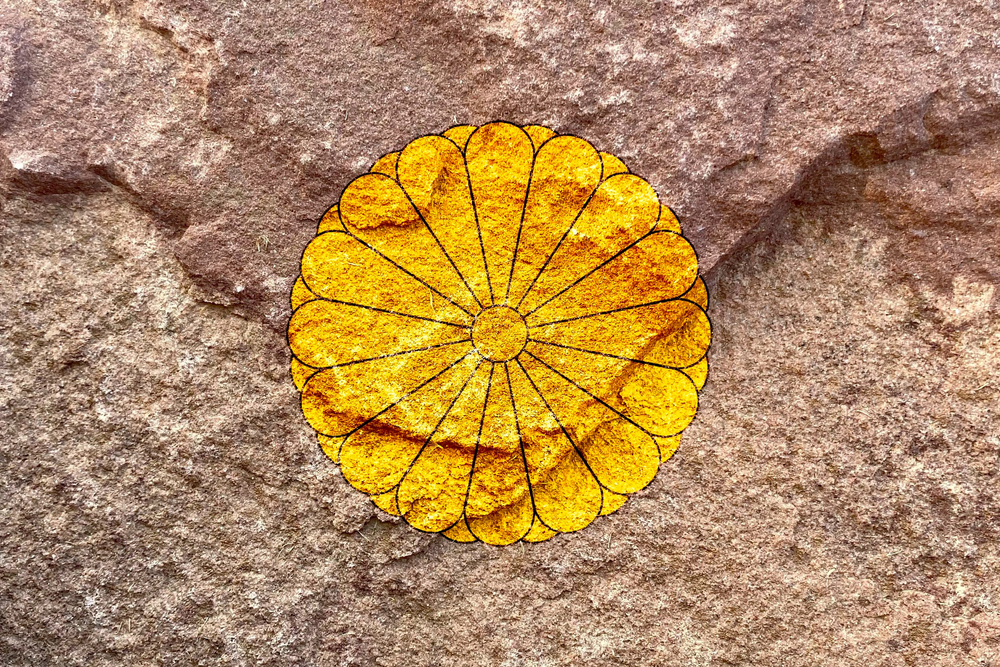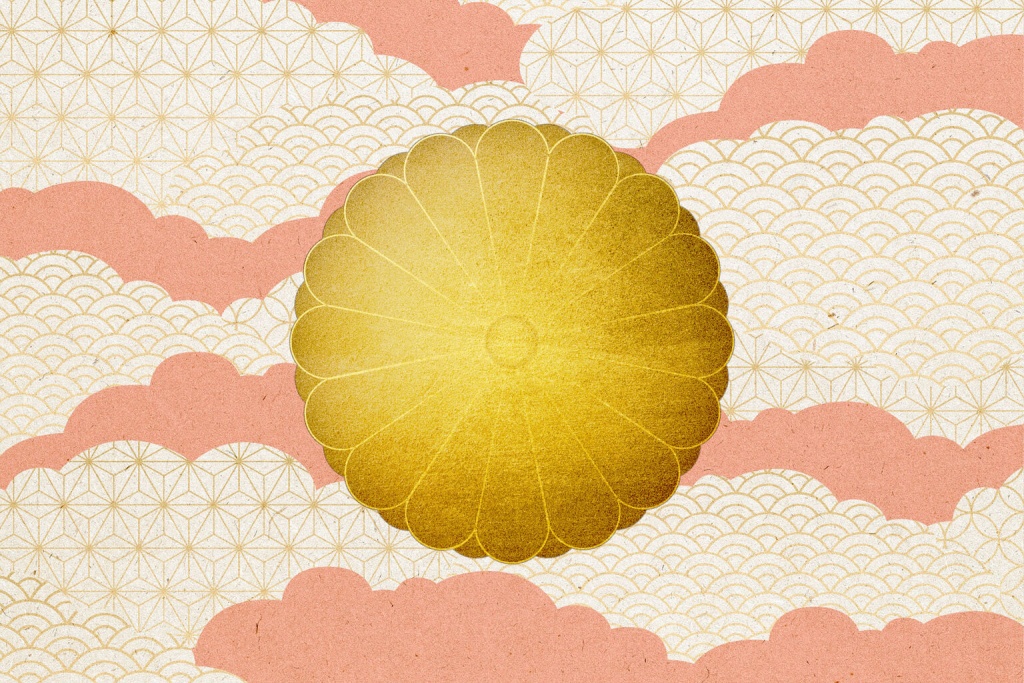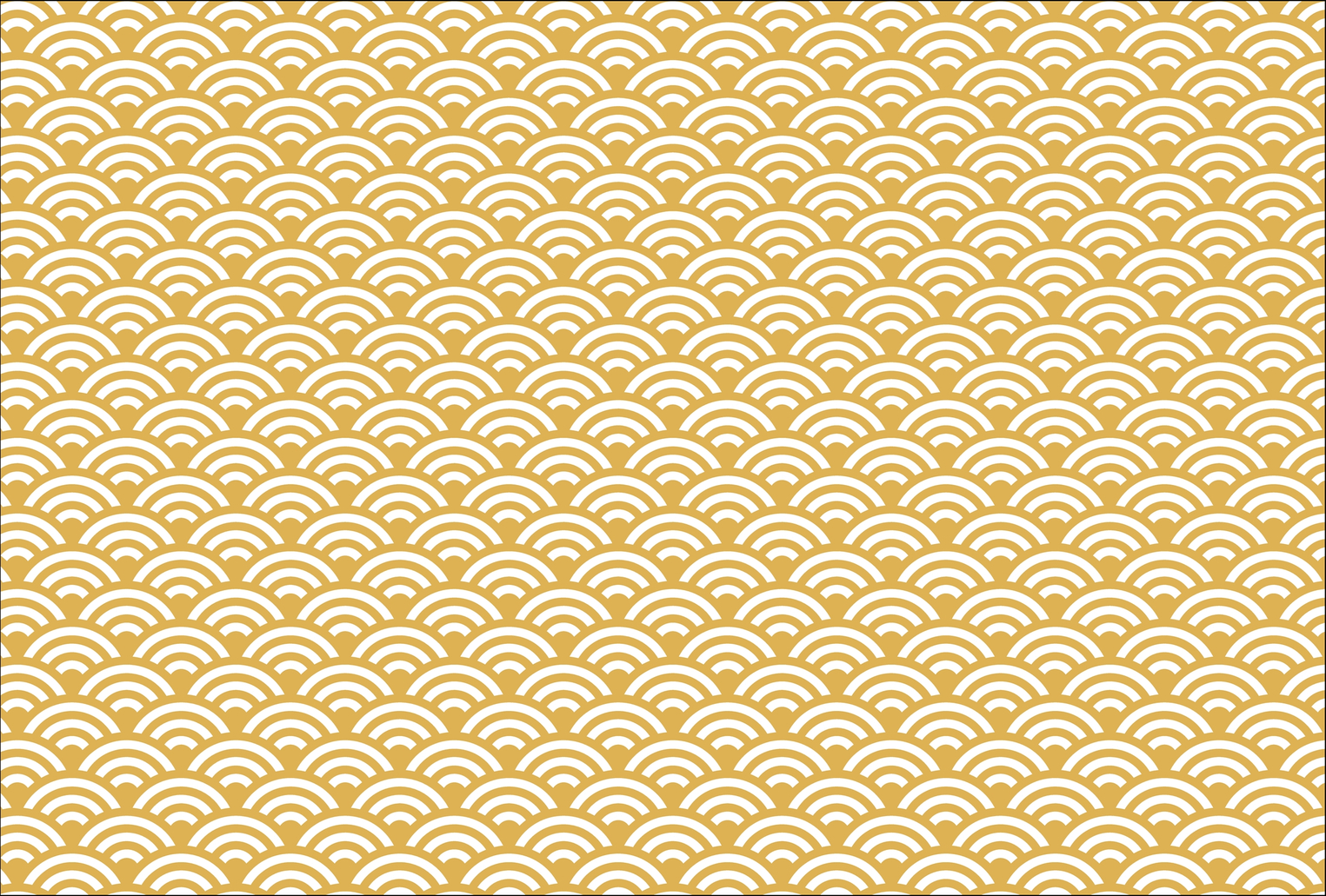From traditional fabric designs to family seals, Japan is full of symbols to dissect. Many of these symbols can be seen regularly, but there are a few others that may go unnoticed. Here are some of the more interesting symbols that you may come across living or traveling in Japan.

Hunini, CC BY-SA 4.0, via Wikimedia Commons
1. Inome
The inome symbol is a heart-shaped design often found at temples and shrines throughout Japan. Dating back to the Kofun period (300–538 AD) some 1,400 years ago, this symbol has also been found carved into spearheads and the hand guards of swords from the period.
However, though it is heart-shaped, the inome symbol has nothing to do with love. Literally meaning “boar’s eye,” the symbol in fact represents the eye of a wild boar and is said to be a charm to ward off evil spirits.
In Japan, a country where natural disasters occur at a high rate, it may not be surprising that the eye of the dangerous wild boar became such a symbol. Some people believed, and maybe still do, that worshiping something frightening would protect them from various plights. This may be the case with the inome as well.

2. The Imperial Seal of Japan
Another interesting symbol to look at is the Imperial Seal of Japan. Also known as the Chrysanthemum Seal or Chrysanthemum Flower Seal, it is one of several national seals and also the crest used by the emperor and imperial family. Such emblems were used to identify individuals or families, similar to coats of arms found in many European countries.
According to some sources, the chrysanthemum became the family seal of the imperial family during the reign of Emperor Go-Toba, the 82nd emperor of Japan, because he liked the flowers.
However, the importance and influence of the seal was not fully recognized until 1868, during the Meiji Restoration, where it was decided that the 16-petal chrysanthemum would be the symbol of the emperor and imperial family alone. And in 1871, the use of the chrysanthemum as a family seal for anyone outside of the imperial family was banned.

The “Genji-mon” (源氏紋) or “Genji-Kô” (源氏香) symbols used for the 54 chapters of the Tale of Genji (early Japanese “novel”). They indicate the possible groupings of five elements. Note that the image reads from top-to-bottom along columns, and then from right-to-left from one column to another, so that the start point is at upper right. (Source: Wikicommons)
3. Genjiko
Another interesting set of symbols found in Japan would be genjiko. The term originally refers to a specific incense game where players have to determine which sticks of incense have the same scent and which ones do not. Players guesses and the actual answers are recorded by putting the incense sticks in a specific linear pattern and allude to specific sections of The Tale of Genji, hence the name.
However, these patterns aren’t only used in the game, but in family seals as well. What makes them unique is how few family seals actually use the patterns. Despite being around since the early Edo period, only about a dozen family seals actually use genjiko.
Despite this, there are many variations in the patterns that can be made using genjiko such as an oak tree pattern, as well as a firefly pattern. It’s a mystery how these design rules came to be designed, but it doesn’t make them any less interesting.
4. Seigaiha
Originating in ancient Persia, this pattern made its way to Japan via the Silk Road. Mentions of the pattern can be traced back to The Tale of Genji in which the protagonist, Genji, dances a court dance called “Seigaiha.” The clothes he wears have the seigaiha pattern and it is said that this is how the pattern received its name.
As for the pattern itself, it depicts a vast ocean and represents the wish for eternal happiness and peace between people. Some also say that it represents resilience and good luck.
While traditionally, the pattern is used in Japanese textiles, seigaiha can also be found on ceramics as well. More recently, it is possible to find the pattern used in modern graphic design from smartphone cases to cute handbags.

5. Asanoha
Another pattern traditionally used in Japanese textiles, the asanoha pattern also finds its origins in the Heian period (794–1185). It was originally used to decorate Buddhist statues. As for its name, asanoha literally means “hemp leaf.” It is said the pattern received this name because of its similarities to an actual hemp leaf.
This pattern has several different meanings. First and foremost, it represents a wish for children to grow up strong and healthy. This meaning stems from the fact that a hemp plant can grow 4 meters in merely four months. It is also commonly used as a charm against evil, just as the inome is, and would often be used for baby clothes as a result.
Like the seigaiha pattern, this pattern has also evolved over time. Now you can find the pattern on various types of goods. It was even used as part of the Japan uniform for the Rugby World Cup in 2019, along with the seigaiha pattern.










